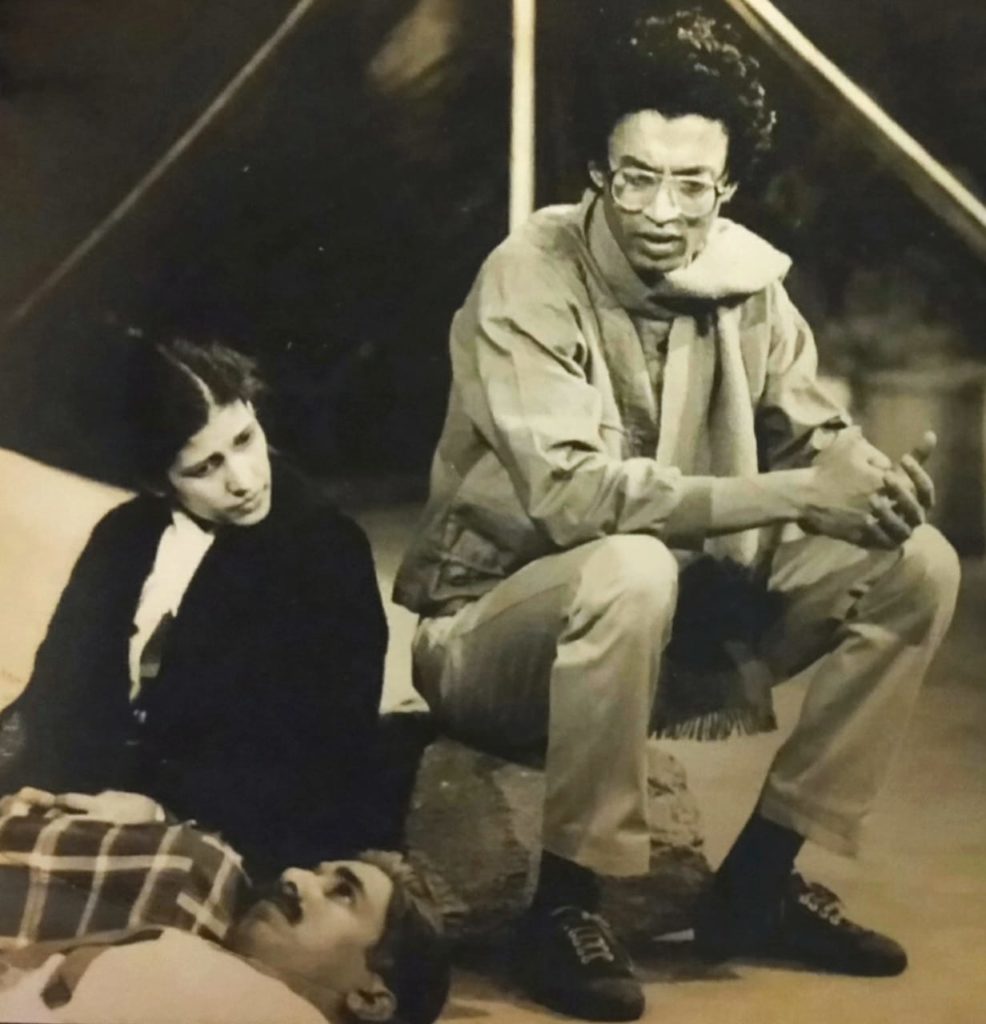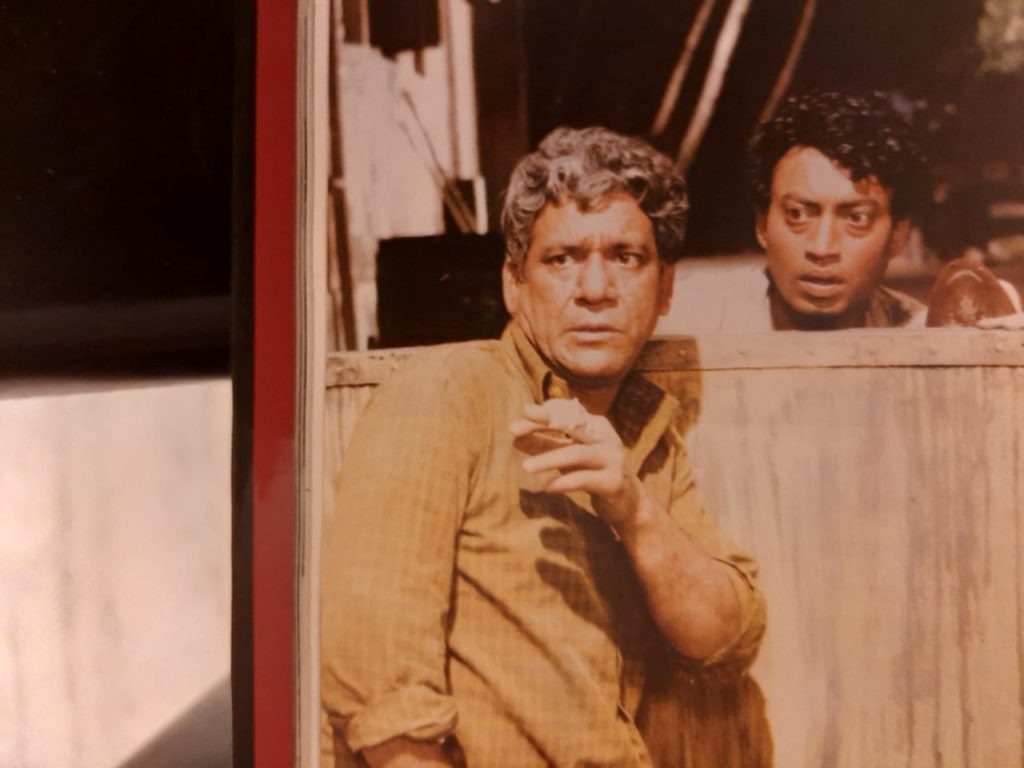Salim Arif, theatrist, film-maker and set designer remembers Irrfan Khan, from their time at the National School of Drama
A lanky young boy with spring in his walk and a slight awkwardness roaming in the corridors of the National School of Drama(NSD) at Mandi House in Delhi is how I met Irrfan for the first time. Coming from Jaipur, he had the small town demeanour with a very sensitive face. His eyes, covered by specs, could still strike you from behind the glass as having a far-sighted vision that went beyond a career in theatre.
The story begins after a few initial exercise productions of King Oedipus by Mohan Maharishi and a collage of poems by Raghuveer Sahay. It was after a zero year that the school had allowed admissions and a new director, Mohan Maharishi, was at the helm. A new energy flowed in the system and this new batch of 85 aspiring students seemed to epitomise that.
Known as the ‘Other Khan’, he carved a niche for himself as a true cross-over international star, rubbing shoulders with the likes of Brad Pitt, and featuring in Oscar-winning films like Slumdog Millionaire and Life of Pi.
The first year in NSD is a testing time for students who come from all over India and abroad. Each selected student has a lot to offer in terms of talent. Often, he or she is a sole representative of his city or state; they have to find their bearing afresh in an environment which usually is more of a cultural shock for youngsters coming from remote towns and non-cosmopolitan cities.
The peer pressure and desire to learn and excel has its own issues.
However, Irrfan coped well with all of this. In his first major role in Fujiyama, a Russian play, adapted by Bhishm Sahniji and directed by Prasanna, showed glimpses of what lay in store in his future. A play, where his talented, courageous companion and future wife, Sutapa Sikdar, came in his life to stay forever. She shaped this rough cut stone to a diamond as a person later in life.

IT WAS A batch loaded with talented youngsters like Alok Chatterji, Uma Amit Banerjee, Ashok Lokhande, Bharati Sharma (seen with him in the picture along with this tribute), and Mita Vashishth, who all became formidable performers later. Besides Idris Malik, Irrfan Khan stood out with his earnest portrayal of a tormented man.I was an associate in this production and since then continued to have a relationship with this talented batch in NSD. He went on to do several notable roles later on stage, but his eyes were steadfast — set on Bombay and films.
Irrfan came to Bombay and looked for work. One of his first assignments was a small cameo in Mira Nair’s Salaam Bombay. He worked with me in several projects in his early days in Bombay where I was happy to introduce him as a very talented actor from NSD, and my junior.
Bharat Ek Khoj, Chanakya, Kirdar, Chandrakanta followed. He was auditioned for the role of Jinnah in the film, Sardar Patel, that was eventually done by Shrivallabh Vyas , my senior. However, he kept moving on with roles in Govind Nihalani’s drama series and the NFDC produced Drishti with Shekhar Kapoor and Dimple Kapadia. Irrfan gradually got a foothold with one-off bestsellers and a few TV shows. Haasil happened, followed by Maqbool, Paan Singh Tomar, and, finally, Namesake, as the leading man.
From a two-scene role to the leading man with the same filmmaker, in an international project: to me this defines the resilience of
Irrfan Khan.
Known as the ‘Other Khan’, he carved a niche for himself as a true cross-over international star, rubbing shoulders with the likes of Brad Pitt, and featuring in Oscar-winning films like Slumdog Millionaire and Life of Pi. The last-mentioned film set him up as a leading luminary among actors in Hollywood from Asia.

One remarkable quality Irrfan had was to sense a good role and script and see the potential of taking that role to a unique height and give it his individual stamp. He seldom did a bad film or a bad role. He had the conviction to say no to big roles if they were not to his liking. But he also had the vision to find smaller parts that could be worth his while, like the roles in Saat Khoon Maaf, Haider and Talvar.
He had the conviction to say no to big roles if they were not to his liking. But he also had the vision to find smaller parts that could be worth his while, like the roles in Saat Khoon Maaf, Haider and Talvar.
Without any godfather or favourite filmmaker, who could promote him, Irrfan managed to create a unique position for himself
that was above the weekly ratings of the mainstream film industry. Widely respected by all as a wonderful human being, it was indeed great to see the awkward young boy become the dapper and nuanced actor of great sophistication in Indian and international cinema.
My conversations with him were more of usual banter with exchange of information about several things; very personal in nature. As he became busy with international commitments, meeting him became a rare chance, but his smile remained the same as was his warm hug.
The last we met was at the Talvar premier with a usual warm hug and a promise from each other to meet in leisure and peace that
never came. In this time of lockdown, sitting alone, I still think of him with that spring in his walk and that unique smile, in the corridors of NSD, and the hearty, maniacal laugh that was ‘Signature Irrfan’.
Irrfu, we will miss you and live with your pleasent memories.
RIP.